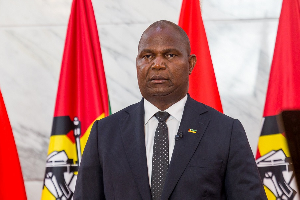Remittances from Ghanaians working overseas to their families back home dropped last year for the second consecutive time, to US$1.92billion amid moderation in global economic growth that reflects the slowdown in China’s growth prospects and falling oil prices.
According to figures provided by the Bank of Ghana, the record of individual remittances through banks into the country in 2015 was 16.9 percent below that recorded the previous year.
The declining level of personal remittances to Ghana is likely to be a source of worry for the country’s monetary and fiscal managers, who consider private remittances to be more vital to the economy than aid since they have been much bigger and more stable than official development assistance and foreign direct Investment flows since 1990.
Remittances to the country hit its peak in 2013 when US$2billion was sent home by what the World Bank has estimated to be 737,000 Ghanaians working abroad. Since then, however, the value of remittances has been reducing as economic growth worldwide slows.
The recorded private remittance figures, according to some analysts, reflect only the ‘tip of the iceberg’ as they do not include remittances sent through informal channels such as hand-carriage, families, money couriers or networks of informal transfer agents.
Based on the Bank of Ghana’s own estimates, the reported figures could represent only about half the actual total.
Currently, the component of personal remittances recorded by the central bank through the banking system constitutes about 10.79 percent of entire inward transfers recorded in the country last year.
In all, the central bank says that private inward transfers received by non-governmental organisations (NGOs), Embassies, service providers and individuals through the banks between January and December last year amounted to US$17.8billion, which is a 5.28 percent increase over the transfers through banks within the same period in 2014.
The quantum of total inward transfers last year indicates a recovery of inflows that had taken a southerly turn since 2012.
The transfers, according to Bank of Ghana figures as seen by the B&FT, were mostly wired from the United States of America and Canada, United Kingdom, the European Union enclave, ECOWAS and other African countries, among which the USA and Canada are the biggest senders of the money, with about US$1.1billion in total for 2015.
B&FT analysis shows that the inward transfers were mostly channeled into the services sector, including mining and oil & gas services, ICT and financial services, which in 2015 ranked highest in attracting Foreign Direct Investment (FDI), according to the Ghana Investment Promotion Centre.
The building and construction and tourism sectors were also heavily targetted by recipients of the inward transfers.
The slowdown in world economic growth is expected to impact negatively on inward remittances in general. However, as the country goes to the polls in November this year, it is envisaged that some election-related effects will likely have Ghanaian emigrants sending more money back home to support local political campaigns - a trend seen during past election years.
Business News of Wednesday, 16 March 2016
Source: B&FT













